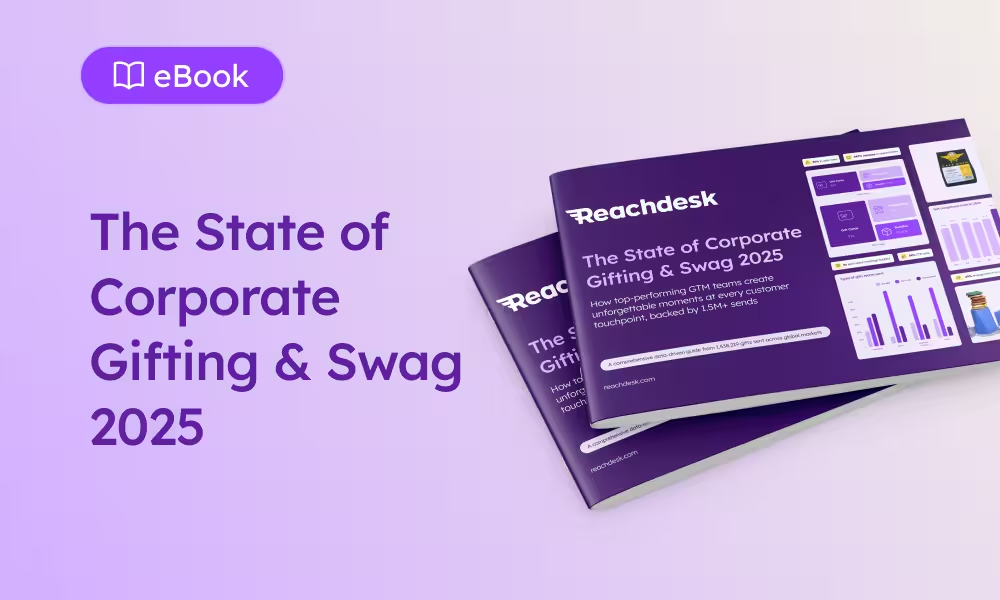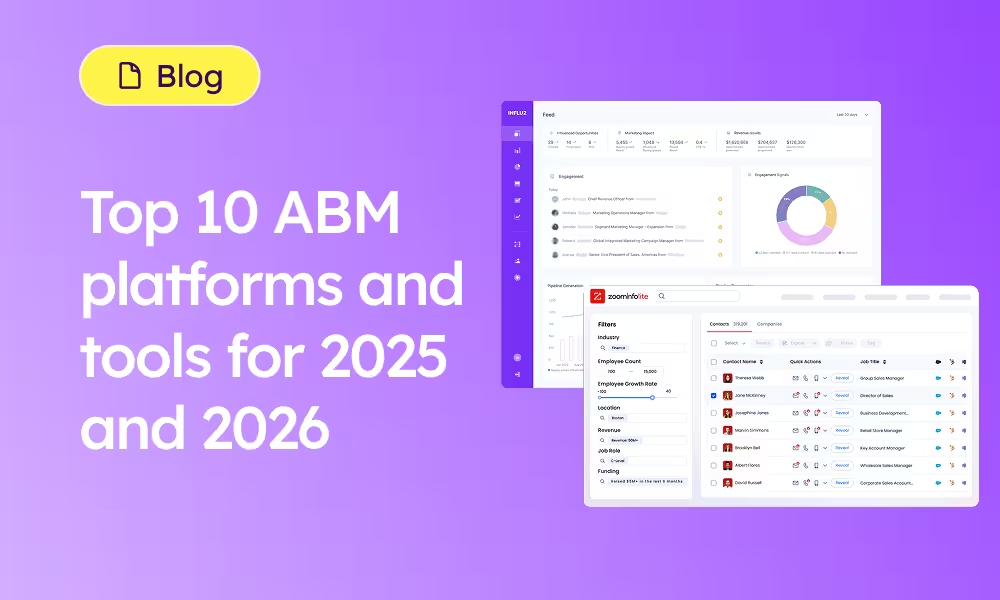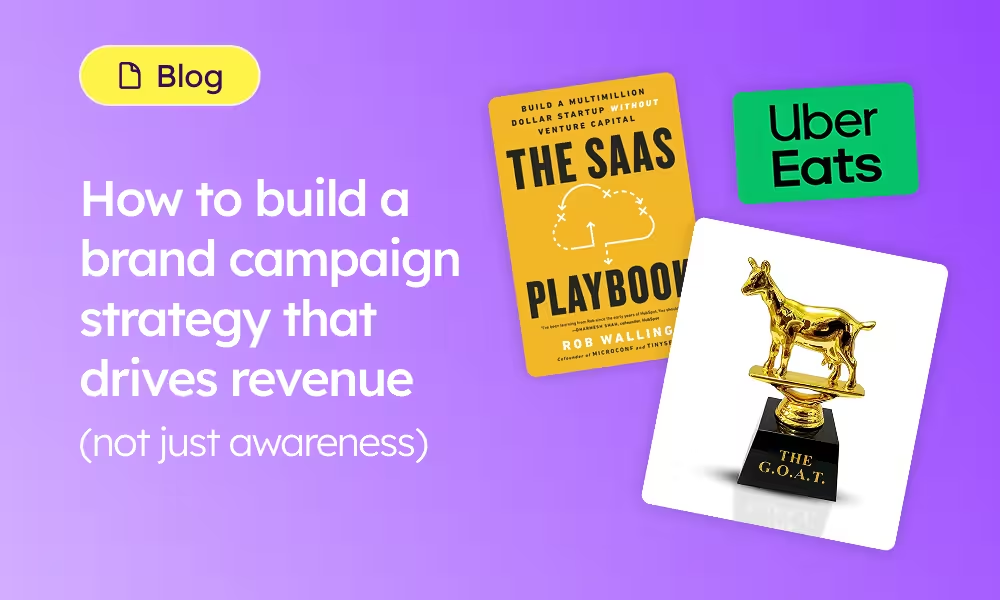One powerful platform for ROI-driven corporate gifting, swag, and engagement at scale.
Modern B2B marketers love account-based marketing (ABM) so much that for some, it’s the only way to do their job well. As a marketer you select your ICP, you decide on your strategy, you pick out the tactics you will use, and then you work very closely with sales to execute campaigns. This formula has done miracles for modern B2B marketing so it’s no wonder that in 2021 70% of marketers report to have used ABM.
“ABM was commonly seen as a manual, resource-heavy, and expensive tactic available to a handful of large enterprises. Thanks to developments in technology, today ABM is a tactic that businesses of any size can adopt and scale.”
Paul Gibson, VP EMEA, Demandbase
ABM has evolved to become a winning strategy for the entire revenue team and now unites marketing, sales, and customer success teams under the same goal - delivering the best customer experience possible. We like to call this new era in the evolution of ABM - account-based experience (ABX). ABX is a go-to-market strategy that focuses on the customer and uses data to create the best possible experience throughout the B2B customer lifecycle.
The brands that win in this new era are the ones that deliver phenomenal customer experience and never stop improving it. The big question B2B revenue teams need to ask themselves in the coming years is what am I doing to go above and beyond for my customers and how can data and technology help me exceed expectations?
Customer experience is the new currency in B2B marketing
We’ve all heard the old chestnut “B2C buying decisions are driven by emotion and B2B decisions are driven by logic”.The reality is that all buying decisions are made by humans and all human decisions have an emotional basis. In the B2B world, people buy with emotion and justify with logic later. Experience is the new currency that drives this emotion. If you focus on the experience you create for customers and speak to human emotion you’re going to build deeper connections.
A few key factors are driving a change in B2B buying behavior that will make delivering a great customer experience even more critical in the future.
Buyers have more control
Information ubiquity has given buyers more control over their purchasing decisions. Buyers want a simpler buying experience that puts them in control of the buying journey.
It’s the age of the millennial
Millennials are becoming the prevalent decision-makers in business and we know they value peers more than providers. Modern B2B buyers want to be treated as partners, not targets.
B2C sets the expectations
The experience buyers have as consumers is shaping their expectations of the B2B buying experience. People increasingly expect the same seamless experience they have buying shoes online when buying solutions for their business.
Digital journeys are here to stay
Over 90% of B2B organizations have transitioned to a remote sales model as a result of COVID-19 and social distancing policies. What’s more, looking forward they see digital interactions as two to three times more important than traditional interactions.
What data can you use to create great customer experiences?
Databases
Your customer relationship management (CRM) system is hopefully the first place you go when you want to better understand your customers and prospects. Databases like Cognism can be a useful way to enrich the data you already have and uncover more in-market buyers.
Third-party intent data
Monitoring buying signals early on in the customer journey can reduce the average sales cycle and increase close rates and deal value. Resources such as G2 and Demandbase are a great way to keep an eye on buying signals and potential prospects. If you’re going to take the time to listen to intent signals, make sure they are the intent signals that are relevant to your business. Also, don’t forget that intent data is useless without a plan on how to use it.
“The real challenge is how you enable the sales team to engage in a meaningful way once you’ve seen those buying signals. Marrying intent data with the right sales enablement tools is vital. Unless you’re evolving your approach all the time, the data you collect is going to waste.”
Alex Olley, CRO, Reachdesk
Customer health data
One of the most exciting developments in B2B marketing of late is the focus B2B revenue teams put on customer expansion. The probability of selling to an existing customer is 60% -70% vs. a 5%-20% chance of selling to a new one so not looking at customer health data is just silly. Using a customer experience platform such as Medallia can help you build formal processes around collecting customer feedback and acting on it. Regularly looking at metrics such as net promoter score (NPS), customer satisfaction score (CSAT), and setting up a customer advisory board (CAB) are all great ways to keep your finger on the pulse of what’s going on in the market. The moment you step away from speaking with your customers directly is the moment you lose your biggest asset.
Your website
Sorry for stating the obvious but in case you needed reminding your website visitors’ behavior is one of the best sources of buyer intelligence. Monitor which pages buyers are viewing, how often they come to your website, and how many different stakeholders from key accounts have landed on your website to gauge signals they might be ready to buy.
Social data
At Reachdesk, we’re big believers in marketing and selling to a person, not a persona. No matter how well-researched your personas are, you can’t build a deep connection with the individual you’re speaking to if you don’t get to know them on a human level. Look at LinkedIn activity to spot triggers such as job changes or the launch of a big project. Pay attention to social media data to learn more about their passions and interests.
Technographics
For B2B technology buyers, making sure any new technology partner complements the technology they already use is an important factor in the buying decision. Preempt any concerns potential customers might have by researching what technology they currently use and thinking about how your solution fits into their tech stack. You can use apps like Wappalyzer to check the technology stack of any website.
Firmographics
Company information is available publicly online. With a quick Google search, you can find out in what regions the business operates, how many employees it has, what industries it operates in, and read latest reports and funding and investment news.
How to use customer data to create a winning plan of action
There’s no point in collecting a ton of data if it’s not actionable. The key is getting it into one single source of truth, making it visible to your team, and then acting on it. There are three key components to a winning plan of action:
1. Timing
When customers are engaging, you can’t let time be the killer. Monitor demo requests, accounts visiting your site and engaging with social channels or visiting your G2 profile. You need to engage with contacts and accounts when they’re engaging with your brand. Make the customer journey easy. Don’t create friction by gating all your content so you can capture leads. Be smart and remove all barriers.
2. Messaging
Templates and automation allow for scale but being lazy with personalization can put people off. The instant reaction is “How will they treat me when I’m a customer if there’s no context behind the communication in the sales process?”. Empower your sales and customer success team to be more human and personal with their messaging. The first step, as we mentioned, is collecting relevant customer insights then enabling your sales team to use in creative ways to inform outreach strategy and messaging.
3. Omni-channel
Consider how busy we are, how many digital comms we receive. Digital channels have seen us through the past 18 months but we’re all now getting overwhelmed by digital communication. There are ways to enhance the digital buying experience - video and direct mail and gifting are just a few examples. Don’t limit yourself to the familiar digital channels everyone is using. Differentiate by adding direct mail and gifting to your strategy and meet your buyers on multiple channels.
Get busy creating the best experience for your customers and you’ll see the deeper relationships you create pay off. Get your timing right, deliver a relevant message and meet your customers across multiple channels to drive an enhanced customer experience that sets you apart from others in your space.
Watch our webinar on demand on Turning Marketing Data Into Magic for more tips from seasoned ABXers Allex Olley, CRO of Reachdesk and Paul Gibson, VP EMEA of Demandbase.









